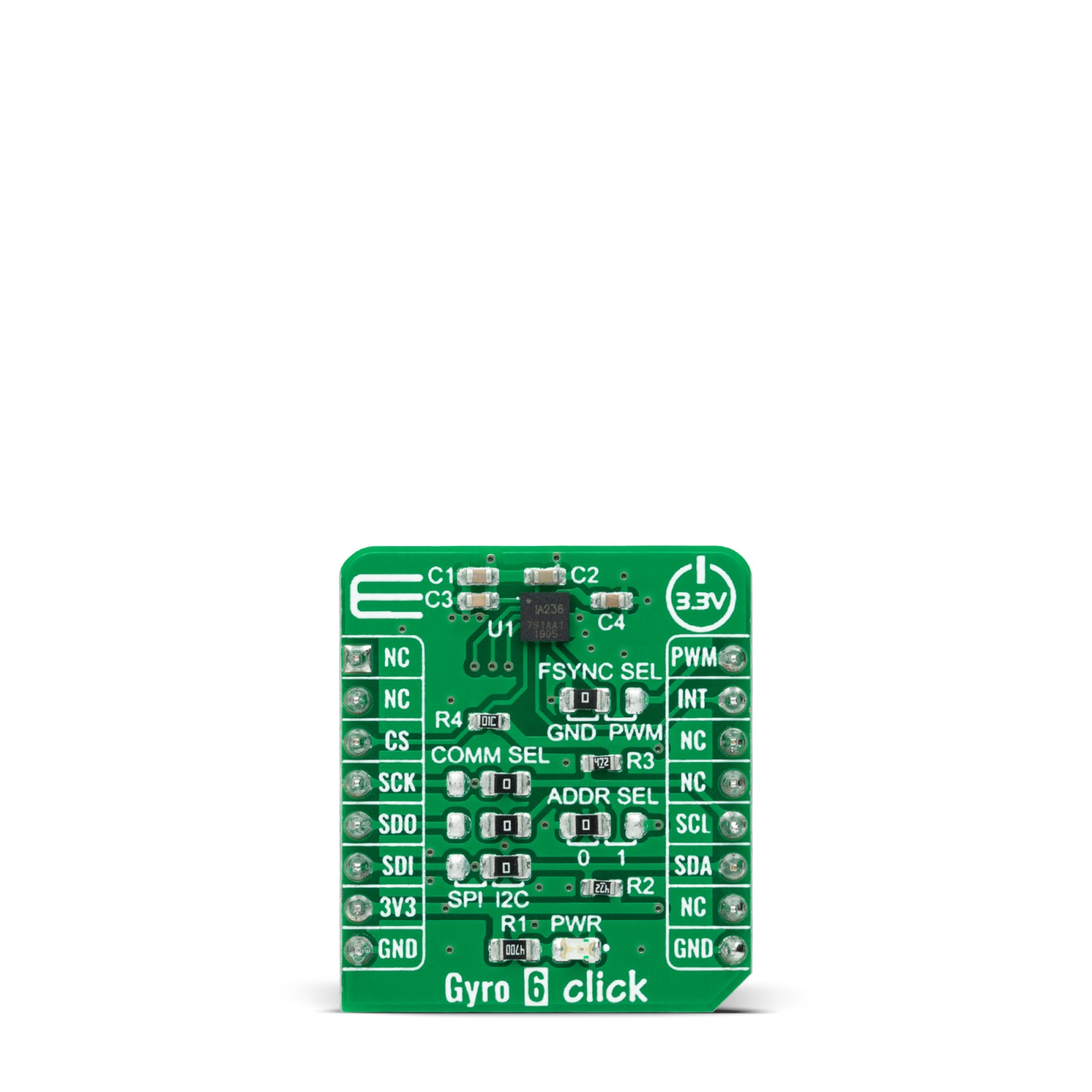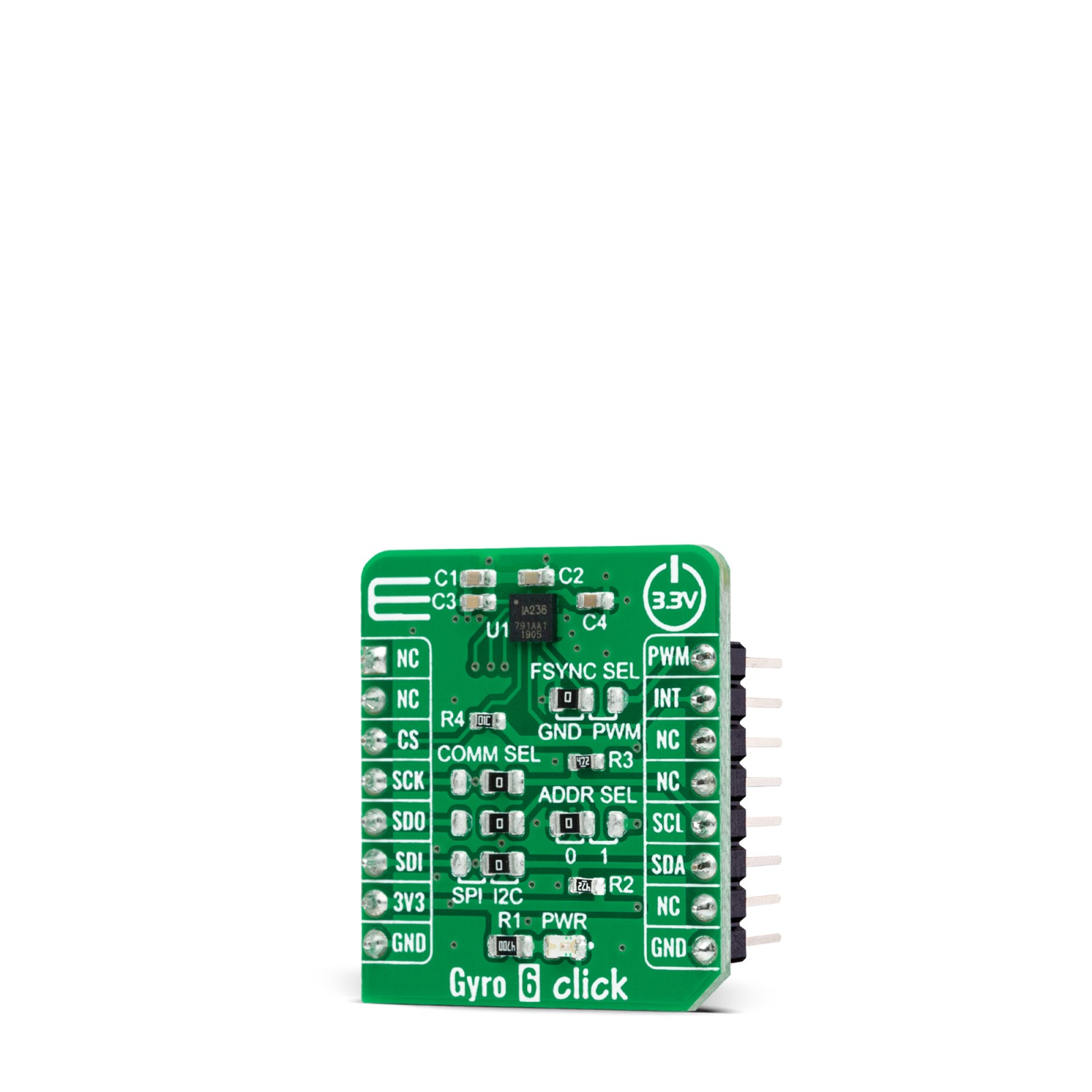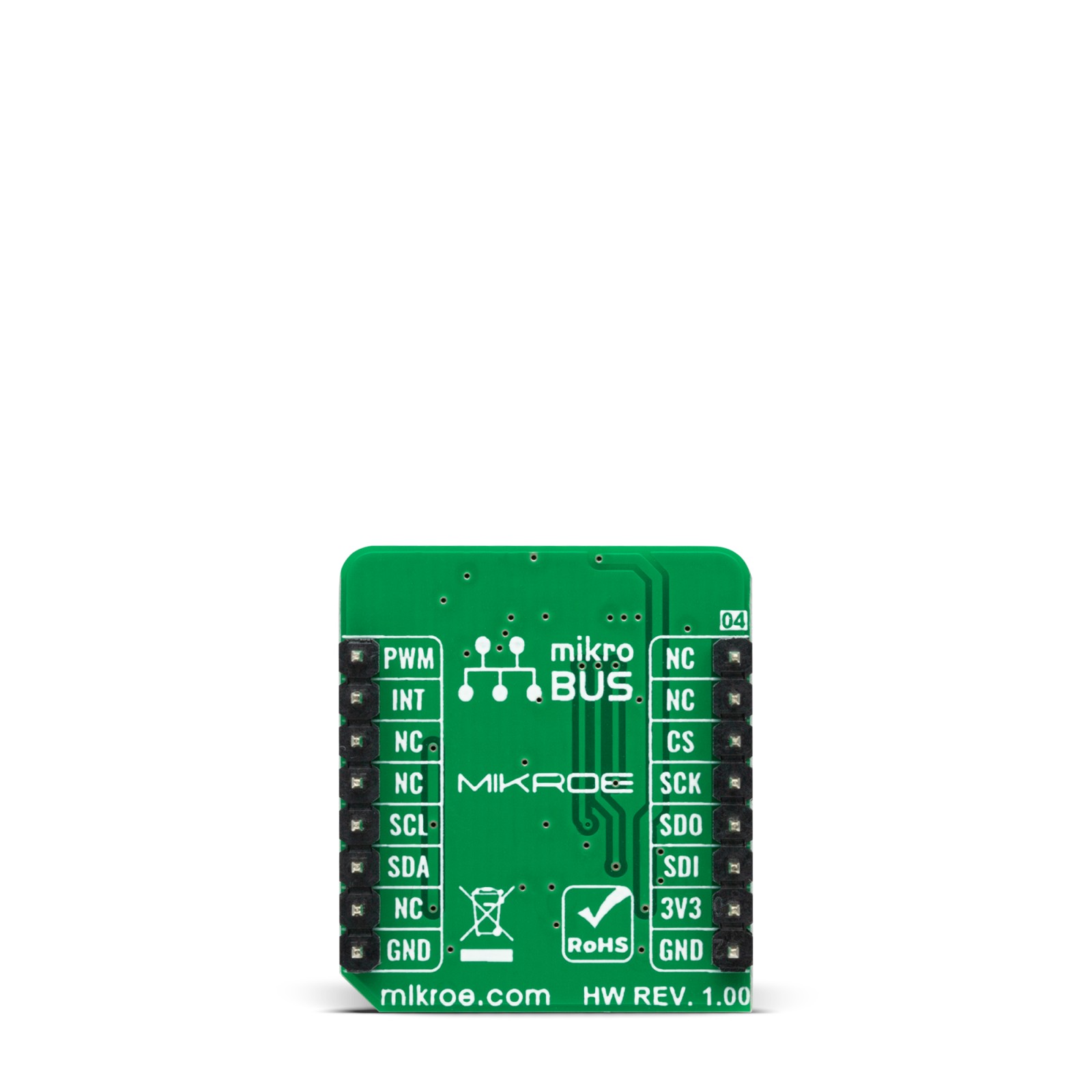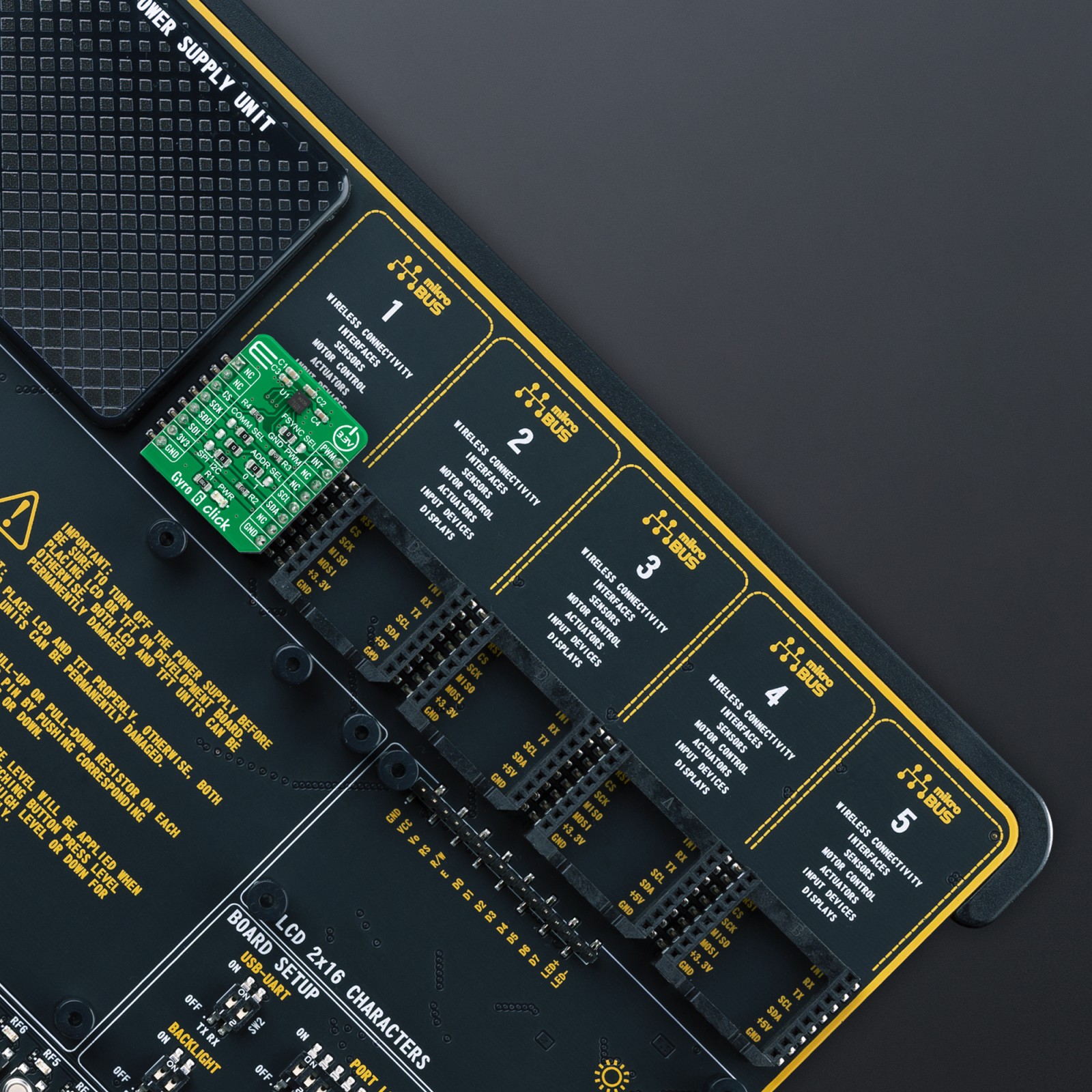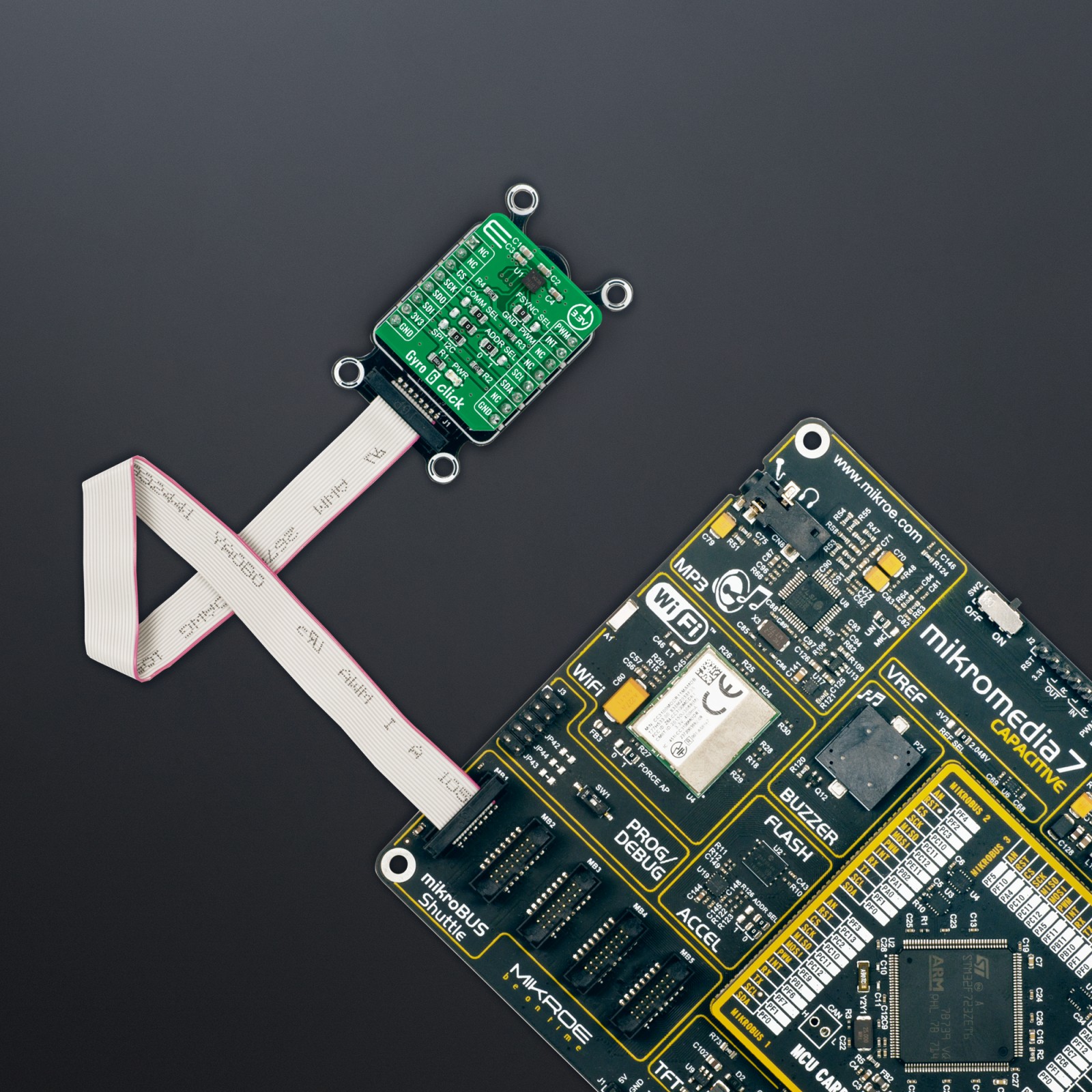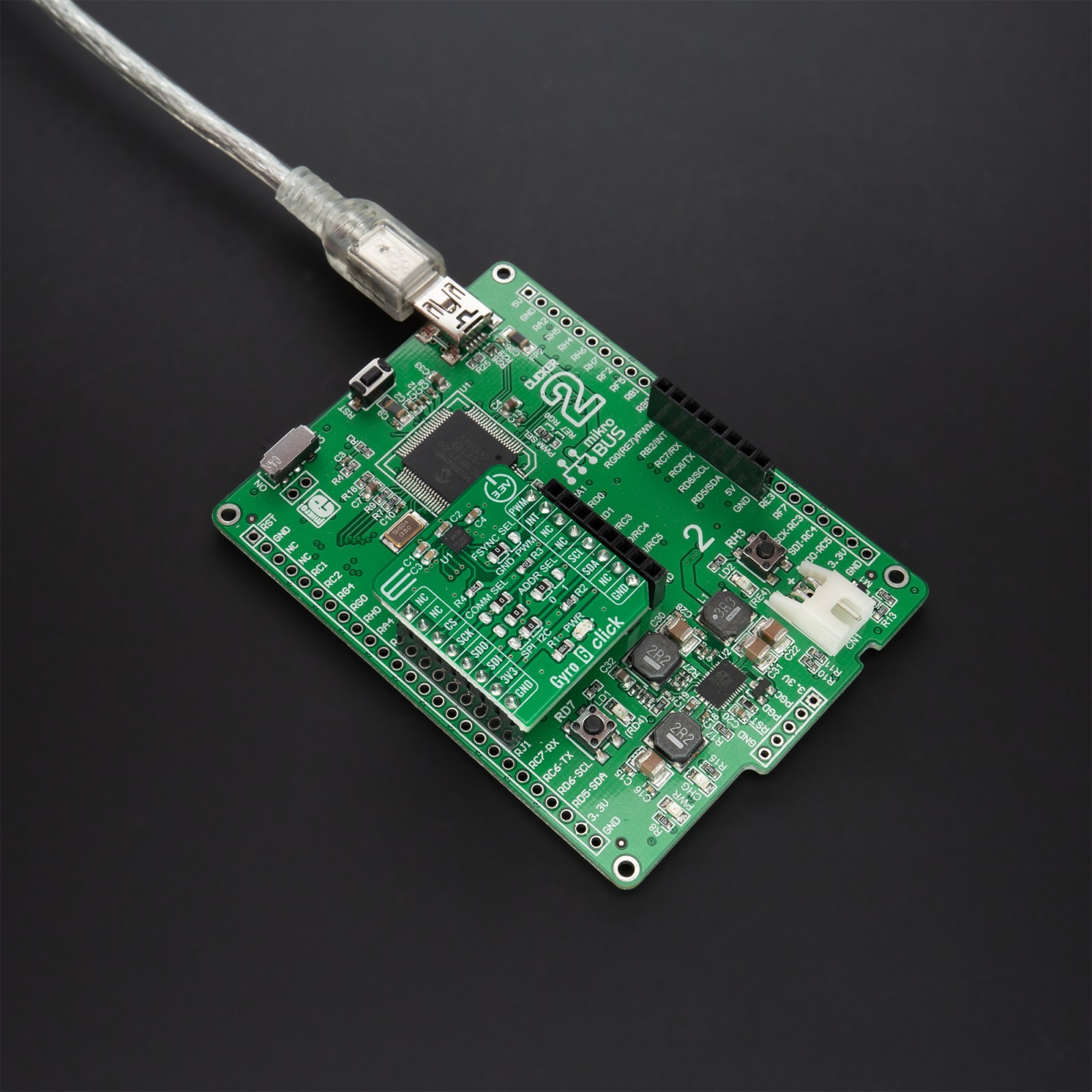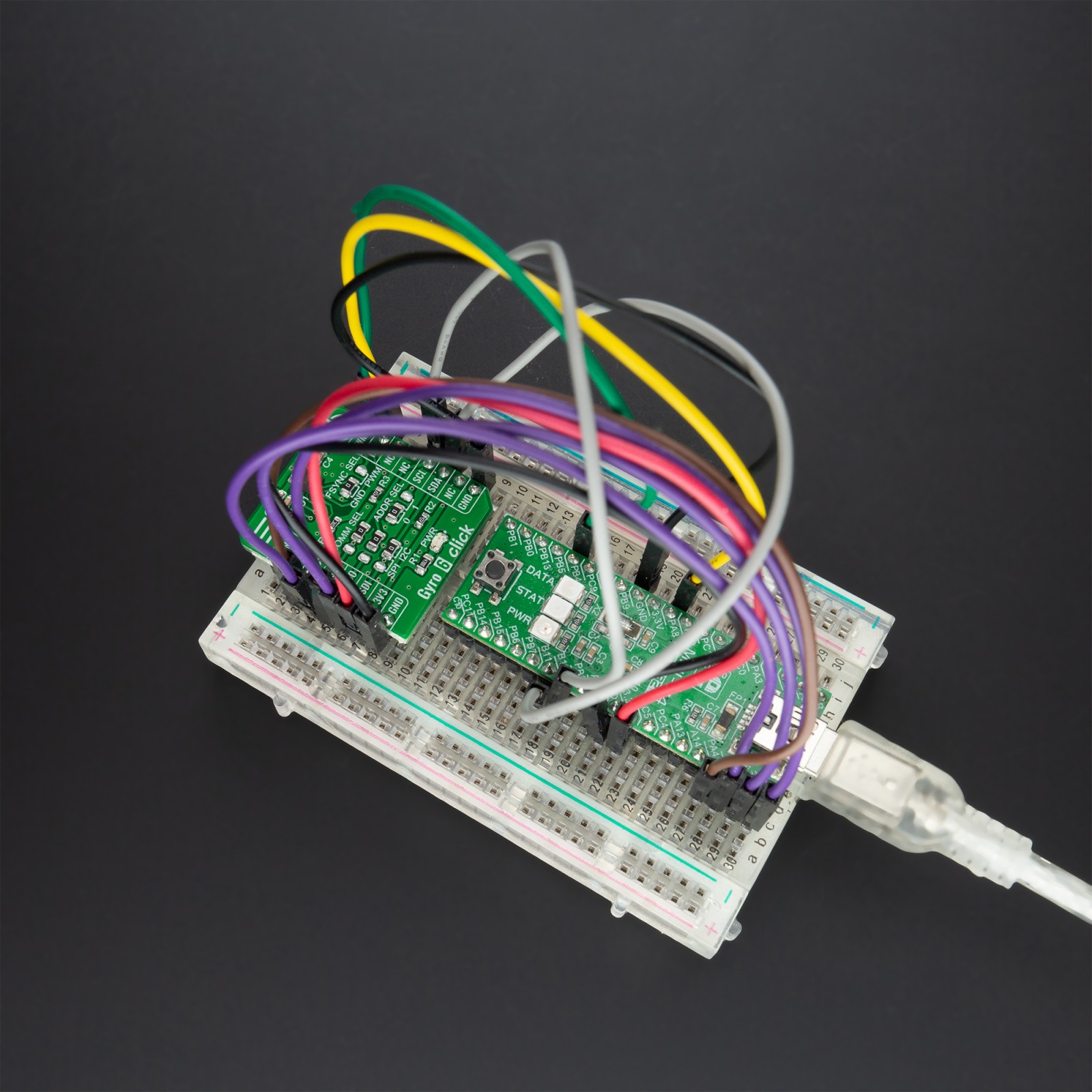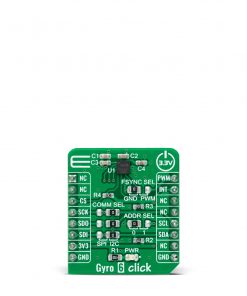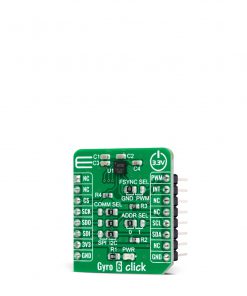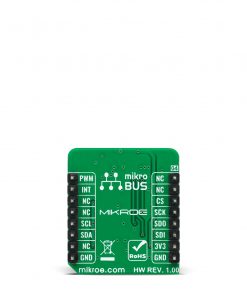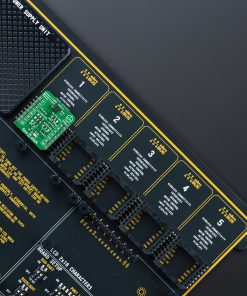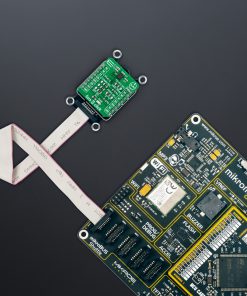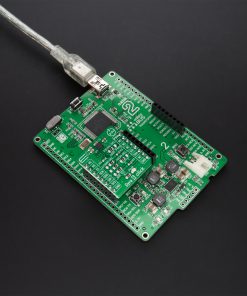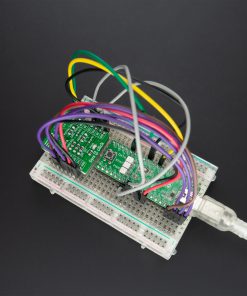Subtotal: R2,160.00
Gyro 6 Click
R590.00 ex. VAT
Gyro 6 Click is a compact add-on board that contains a high-performance gyroscope. This board features the IAM-20380, a 3-axis, digital-output X-, Y-, and Z-axis angular rate sensor (gyroscope) from TDK InvenSense. It has a full-scale programmable range of ±250DPS, ±500DPS, ±1000DPS, and ±2000DPS with a factory-calibrated initial sensitivity and configurable host interface that supports both SPI and I2C serial communication. It also features a 512-byte FIFO that can lower the traffic on the serial bus interface and reduce power consumption by allowing the host to burst-read sensor data and then go into a low-power mode. This Click board™ is suitable for various applications such as angular velocity sensing, angle sensing and control mechanisms, automotive, industrial and navigational systems, telematics, and many more.
Gyro 6 Click is supported by a mikroSDK compliant library, which includes functions that simplify software development. This Click board™ comes as a fully tested product, ready to be used on a system equipped with the mikroBUS™ socket.
Stock: Lead-time applicable.
| 5+ | R560.50 |
| 10+ | R531.00 |
| 15+ | R501.50 |
| 20+ | R482.62 |

 RN4678 Click
RN4678 Click  EXPAND Click
EXPAND Click  GPS Click
GPS Click 